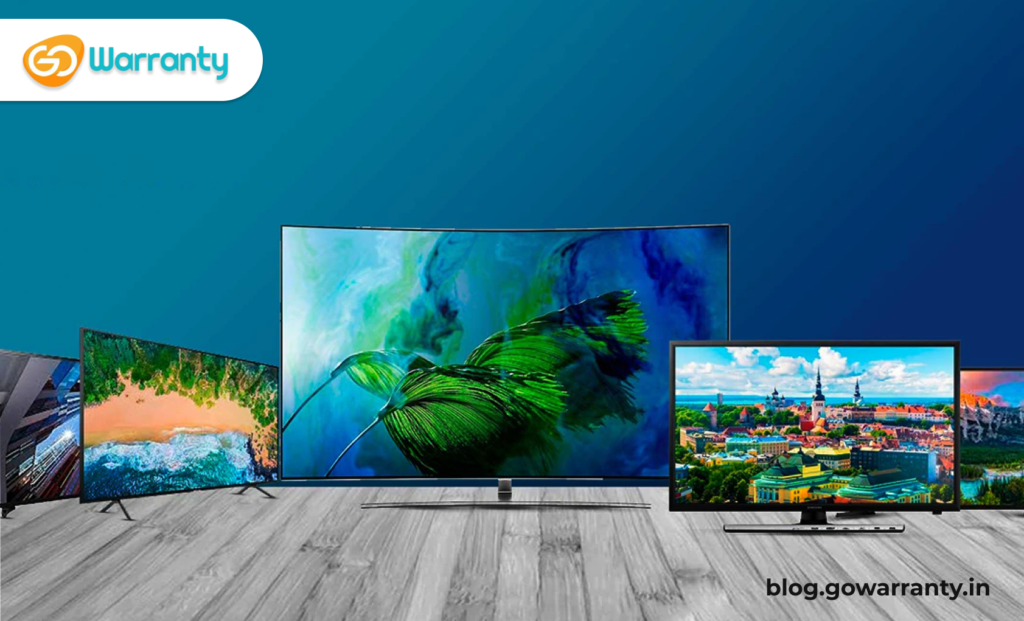There is no one-size-fits-all TV, but your ideal Television is most likely on this page. You simply need to determine your budget, how far you want to go, and which technologies are important to you. Only you know your budget and space but we can assist you with technology in this guide.
The most important factor to consider is panel technology. OLED now rules the premium market and is extremely popular due to its perfect blacks and pixel-level contrast control. However, LCD remains a significant player, particularly at the low-cost end of the market, which OLED cannot currently compete with. There are also plenty of excellent premium LCD-based TVs, most notably Samsung’s top QLEDs, which combine Quantum Dots with Mini LED backlights to produce the brightest, most vibrant images possible.

You should also think about whether the TV you’re considering has every streaming app that you want. Although some apps, such as Netflix and Prime Video, are now everywhere, you may have a favourite that isn’t as well-known. Unfortunately, some streaming apps do not work properly on certain televisions. Many Google/Android TVs, for example, support Disney+ but not Dolby Atmos. That’s why we manually check not only that every major app is present, but also that it’s functioning properly.
Gaming and Sound
Serious gamers should also ensure that their potential new TV supports all of the latest gaming features. 4K/120Hz is the most technically advanced and thus rare of these, but VRR and ALLM are also worth looking for. Finally, you should think about sound, but that doesn’t mean you shouldn’t consider a TV that doesn’t sound great. Confused? That’s understandable, but the truth is that even the best-sounding TV falls far short of a decent soundbar in terms of audio quality, so we generally recommend focusing on picture quality when purchasing a TV and setting up a budget for a dedicated sound system to go with it. We understand that this isn’t an option for everyone, so we test a TV’s speakers just as thoroughly as its screen.
Recommended Inputs and Outputs for a TV
Nowadays, HDMI is used to connect everything right from set-top boxes to video streamers as well as Blu-ray players to game consoles. A single HDMI connection can also be used to output sound to an AV receiver or soundbar while it receives a video signal, thanks to ARC/eARC (Audio Return Channel / Enhanced Audio Return Channel). Three HDMI connections are currently standard on budget and mid-range TVs, with four being the norm for premium models.
The HDMI connection specifications vary depending on the price of the Television, with premium models now commonly including at least one or two HDMI 2.1 sockets. These have more bandwidth than HDMI 2.0 and can support advanced formats like 4K@120Hz and 8K@60Hz. Fancy gaming features like Auto Low Latency Mode and Variable Refresh Rate are frequently (but not always) supported by HDMI 2.1 (and some HDMI 2.0) sockets. If you have specific features in mind, it is important to thoroughly review the specifications.
In addition to these, some other useful connections are optical and stereo outputs, which can be used to connect legacy audio equipment instead of HDMI ARC. Headphone outputs are still fairly common, though most TVs now support Bluetooth, and some models include the latter but not the former.
What is the optimal size of the TV should you buy?
While it may be tempting to believe that bigger is better, the size of the set that’s right for you is heavily influenced by how close you’ll be sitting to the screen and the resolution of the source material you’re watching. Fortunately, the SMPTE (Society of Motion Picture and Television Engineers) has published detailed guidelines on how far you should sit in order to optimise the performance of your TV.
If you sit at the proper distance from your TV, you’ll see lots of detail, good edge definition, and smooth, clean motion; however, if you sit too close to the screen, you’ll see more picture noise and artefacts. Sitting too far away from the TV, on the other hand, will make it difficult to see all of the picture detail that your TV has to offer.
The following distances are a good setting up point:
- 65in – around 2.1m
- 50-55in – around 1.7m
- 46in – around 1.5m
- 40-43in – around 1.3m
- 32in – minimum 1.3m (Full HD)
Should You Buy a 4K or 8K TV?
Nowadays most of the new televisions are 4K. Even in small sizes, it’s actually difficult to find Full HD (1080p) models. If you’re buying a Television smaller than 32 inches and can save a lot of money on a Full HD model, go for it (4K won’t be much of a benefit at that size anyway), but if not 4K is both worthwhile and a good option.
Also, 8K TVs are now available from a variety of manufacturers, including Samsung, LG, and Sony. Samsung has arguably led the way and the best 8K TV so far is the excellent QE75QN900B. It’s worth noting, however, that almost no native 8K content is available. When you buy an 8K Television and want to show off its high resolution, you’ll have to use YouTube footage of nature, scenery, and space. At this point, no streaming services have even stated of launching 8K content, and an 8K disc format appears unlikely to ever materialise.
For these reasons, it’s difficult to recommend that most people spend the extra money on an 8K TV at this time. However, if you have deep pockets and want to be as prepared as possible for future 8K content, there’s no harm in purchasing an 8K TV now, especially since models like the Samsung QN900B make current 4K content look better than ever.
To conclude, if you want the best television, just go through our guide and see if the TV that you like has all the latest features and is of the best quality. Always make sure to check the reviews of them and buy the extended warranty plans, whenever you buy a new one. GoWarranty will always provide you with the best extended warranty plan for your televisions and you can buy the plan for up to 4 years.

